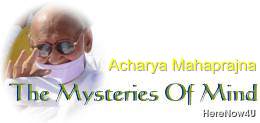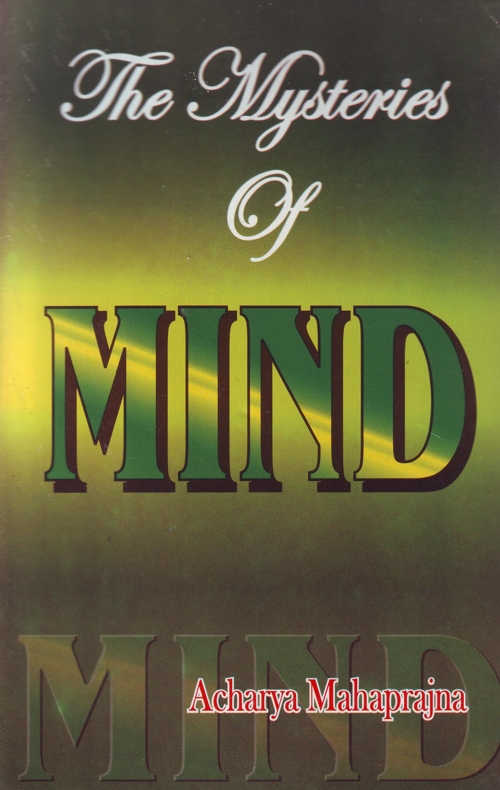
Speaking, walking, seeing the movements of the sense organs, the mind and the intellect are functions of vital energy. Vital energy remains active at the base of all these. The sense organs do not possess consciousness. Combined with vital energy they become conscious. The mind is an unconscious entity. Vital energy produces consciousness in it also. The physical or gross body, which is an unconscious mass, also becomes conscious under the impact of vital energy.
Breath is a great source of vital energy. We not only inhale chemical substances but also vital energy. A firm resolution in the practitioner makes the inflow of vital energy stronger. During breath-perception its strength increases. Breath is, therefore, a great source of vital energy. All the miraculous demonstrations we see are the outcome of vital energy. Heavy vehicles can pass on the human body when it becomes charged with vital energy without the help of which it will be crushed under the weight of the vehicle. Breath contains enormous power. Only a small part of this power is expressed in breathing. The soul contains limitless power. It is proved by the act of breathing.
In ordinary circumstances we cannot perceive breath because we do not know how to see. There is nothing like knowing and seeing in ordinary experiences. We simply think and argue. It is only intellectual exercises which we do in our ordinary life. The world of empirical experience consists of these only.
The level on which we breathe is the lowest stratum of con sciousness. Its basic stratum is a long way away from us. The soul is an independent and free substance. A free substance possesses its specific characteristics, which differentiate it from other sub stances. Substances cannot be classified and arranged in order ex cept on the basis of this differentiation. Consciousness is the characteristic of the soul in comparison with other substances. The independent and free existence of the soul cannot be established if other substances also possessed consciousness. This can be done only on the basis of the specific characteristic, which the soul has, and that characteristic is consciousness.
Seeing and knowing are the fundamental nature of conscious ness. Awareness and knowledge belong to the native existence of the soul. These faculties may be conceived as two separate faculties or they may be combined into a single faculty. In the state of its pure existence the soul does nothing else but see and know. When it becomes removed from its centre, its circumference becomes infiltrated with alien matter and it becomes difficult to clean it. It is easy to infiltrate but it is difficult to clean. As soon as the soul becomes infiltrated by pudgala particles and has become governed by attachments and aversions, seeing and knowing come to an end. What the soul can now do is to think, reflect and contemplate. People think that man to be great who thinks clearly and cleverly and gives a clear advice. On the other hand, he who sees and knows remains a man of unknown identity. Who would be able to recognise him who remains hidden in his own self? Thinking, arguing and reflection are weapons to confute the opponent. We go on inventing new arguments to render the arguments of the opponent futile. This process continues an infinitum. There is no end to arguments. One set of arguments follows another. The entire intellectual life of mankind consists of arguments and counter arguments. This breeds rivalry and enmity in man. On the other hand, those engaged in the search for truth show nothing but friend liness towards others. Rivalry and enmity come into vogue when we are not engaged in the search for truth but in analysing and classifying it. Thinking and reasoning are not the instruments for the search for truth but for twisting and falsifying it. Those who have enough of these weapons can conquer the whole world and those who do not possess these become vanquished.
In the philosophical works composed during the Middle Ages there is ample use of the metaphors of conquest and defeat. You will seldom come across an instance in which the search for truth has been mentioned. The search for truth is incompatible with con quest and defeat. Conquest and defeat are relevant to the capture of the state or material wealth. One who is engaged in the search for truth knows neither conquest nor defeat. The original meaning of the term darsana was to see or to perceive. In the course of the time the art of seeing or perceiving disappeared giving place to dry logic. Direct perception came to be superseded by inference. Indirect knowledge took the place of direct knowledge. This process resulted in the development of mutually opposed schools of philosophy. Intellectual battles never end. They end when philosophy based on insight or direct perception begins. They come to an end with the awakening of consciousness.
Breath perception is the first step in the direction of spiritual attainments. It is a very important step leading to a flight of further steps. What is noteworthy in this connection is that it is not impor tant as to how much we walk, but the direction towards which we are walking. The practitioner has to distinguish between what the right direction is and what is not. If he chose a wrong direction he will go astray and will never be able to achieve his aim. On the other hand even a single step in the right direction will be highly valuable and he will be able to complete his journey in a shorter time.
Breath perception brings thinking and reasoning to an end and trains the practitioner in the art of right perception. Right perception is the opposite of thinking and reasoning. It brings about a state of thoughtlessness. Sarlra preksa or body perception is the second step towards self-realization. One may ask as to what the sense is in perceiving the body. What is to be seen within the body? These questions will subside once we have started perceiving the body. There is much to be perceived within the body. You may go on seeing and seeing and there will be no end to it. The physician examines the body in order to diagnose the disease. He has to examine the body very carefully. He feels the pulse of the patient and employs delicate instruments to examine the working of his body. It is after a thorough examination that he is in a position to diag nose the disease. Mere thinking and reasoning are no substitutes for a clinical examination of the patient.
Meditation is also helpful in examining the inner working of the body. Instruments are also equally helpful. Meditation is a form of perception. Acharya Mahaprajna
Acharya Mahaprajna

